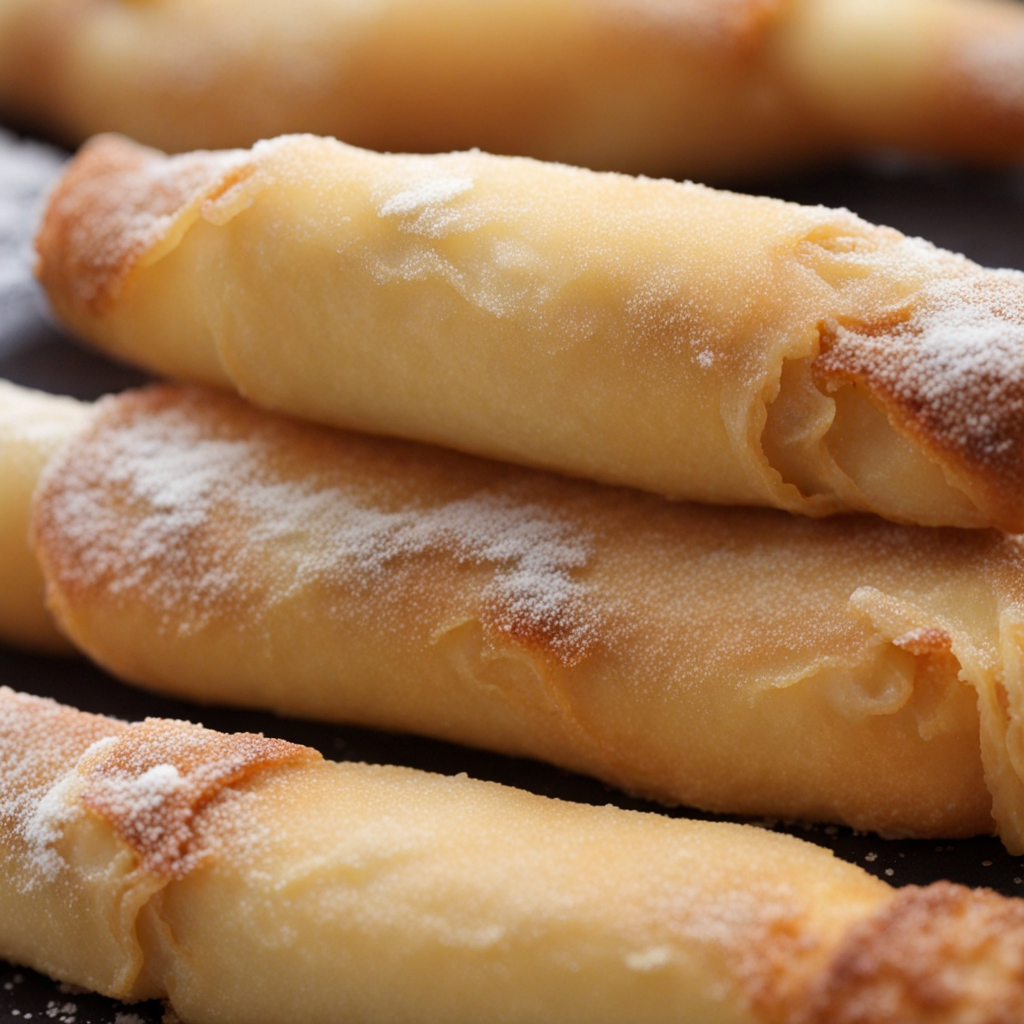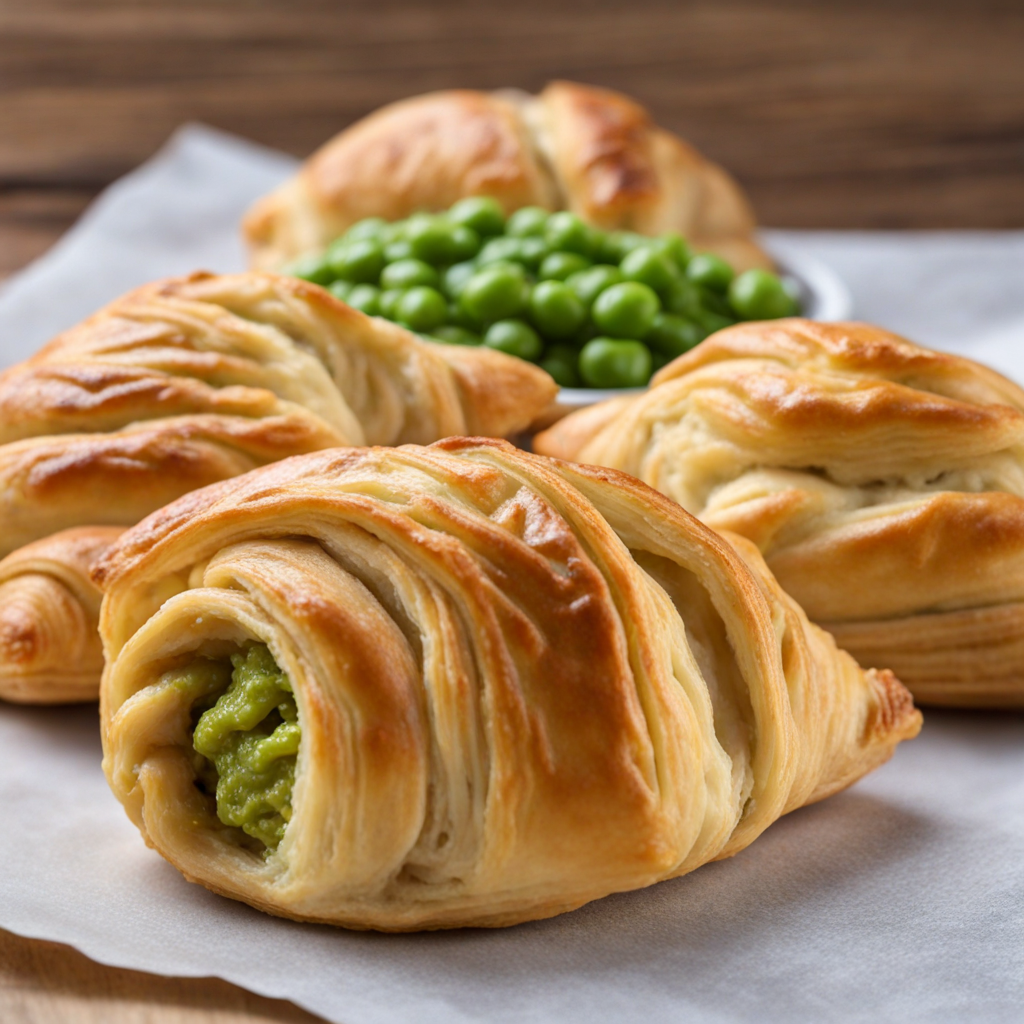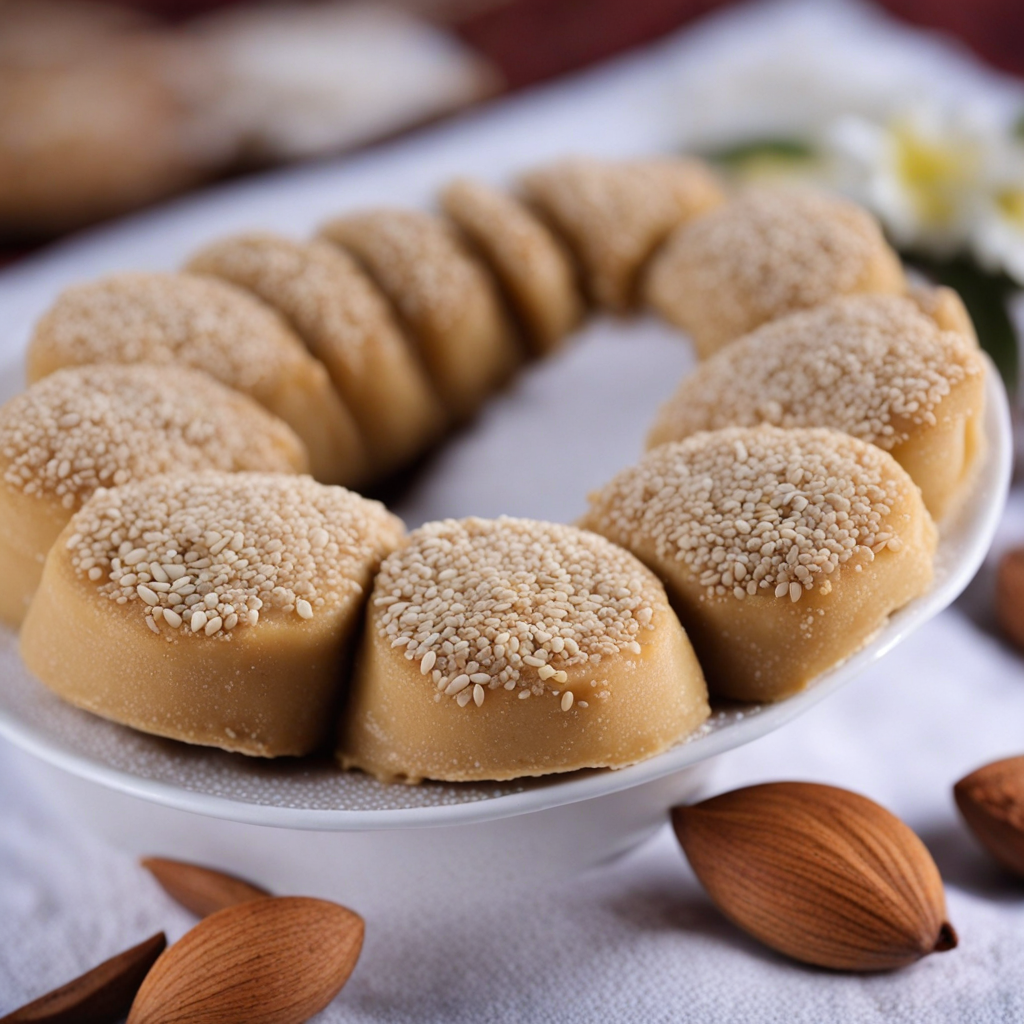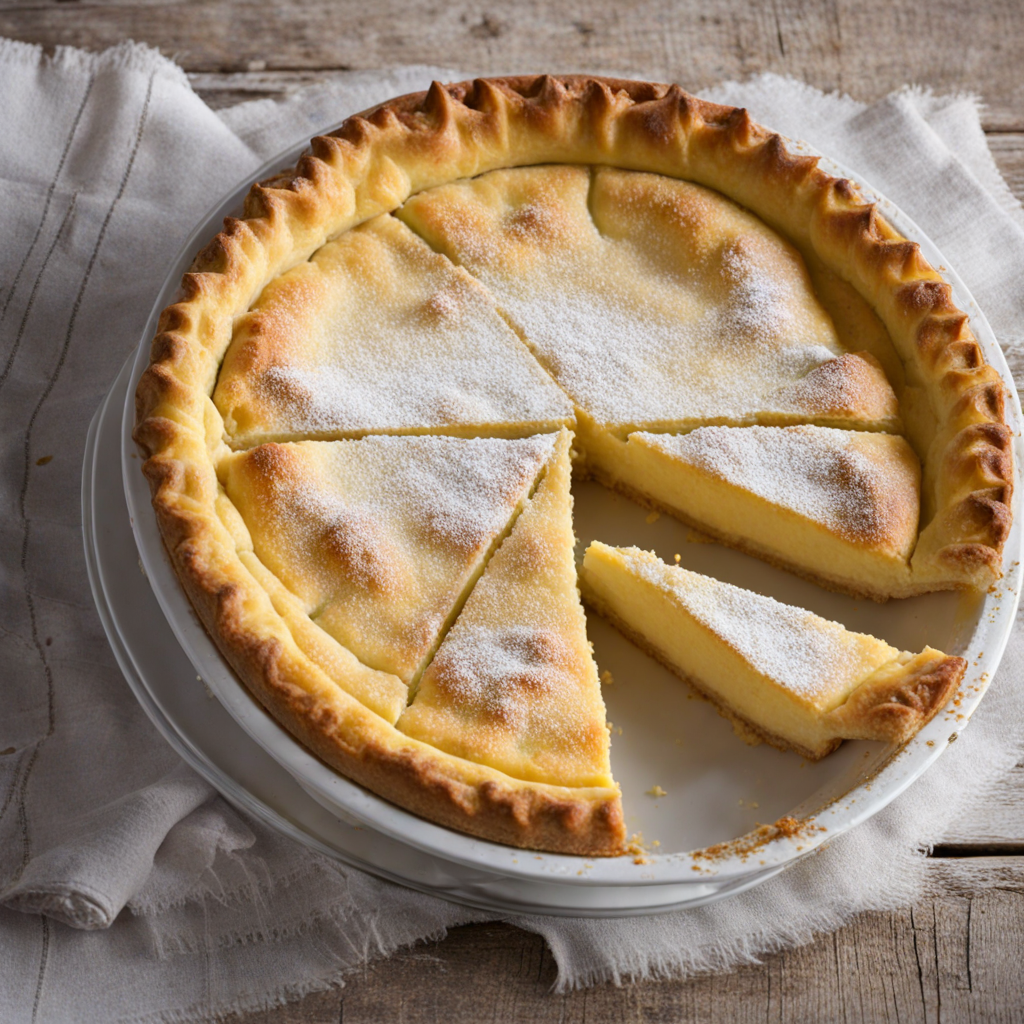Kannoli
Kannoli is a delightful pastry hailing from the picturesque island of Malta, often enjoyed during festive occasions or as a sweet treat any time of the year. These delectable confections are characterized by their crunchy, tube-shaped shells, which are deep-fried to a perfect golden brown. The texture is both flaky and crisp, providing a satisfying contrast to the sumptuous filling that awaits inside. Traditionally, the shells are made from a dough of flour, sugar, and butter, sometimes enriched with a splash of vinegar or wine to enhance the flavor and texture. The true star of kannoli, however, is its rich filling, which is typically made from a blend of ricotta cheese, sugar, and a hint of vanilla. This creamy concoction is often enhanced with a variety of ingredients such as chocolate chips, candied citrus peel, or even a touch of cinnamon, creating a symphony of flavors that dance on the palate. The filling is generously piped into the crispy shells just before serving, ensuring that each bite is a delightful explosion of taste and texture. In some variations, you might also find nuts or pistachios sprinkled on the ends of the pastry, adding an extra crunch and a layer of sophistication to this charming treat. Eating kannoli is an experience that transcends mere taste; it is a celebration of Maltese culture and culinary tradition. Each bite transports you to the sun-kissed shores of Malta, where the warm Mediterranean breeze mingles with the sweet aroma of freshly made pastries. Whether enjoyed as part of a festive gathering or savored alone with a cup of coffee, kannoli offers a unique glimpse into the heart of Maltese cuisine, inviting you to indulge in its rich heritage and the joyful spirit of its people.
How It Became This Dish
The Sweet History of Kannoli: Malta's Beloved Pastry #### Origins and Early Development Kannoli, a delightful pastry that has become synonymous with Maltese cuisine, traces its origins to the island's rich tapestry of cultural influences. The history of kannoli is intertwined with the broader narrative of Malta, a Mediterranean archipelago that has been shaped by various civilizations over millennia. The earliest records of similar pastries can be traced back to the Arabic influence on the island during the time of the Arab occupation from 831 to 1091 AD. The word "cannoli" actually derives from the Arabic term "qannolo," which referred to a hollow tube. This is a nod to the pastry’s signature shape, which is achieved by frying a thin dough around a metal tube. The Arab culinary traditions introduced new ingredients and cooking methods that would lay the foundation for many Maltese sweets, including kannoli. However, it was the Sicilian influence, particularly during the Norman period, that firmly established the pastry in Maltese culture. #### Cultural Significance Kannoli are more than just a dessert; they are a symbol of Maltese identity and tradition. Often enjoyed during festive occasions, from weddings to religious feasts, these pastries embody the communal spirit of the Maltese people. The preparation of kannoli is often a family affair; recipes are passed down through generations, preserving the culinary heritage of the island. In Maltese culture, food is a means of celebrating life’s milestones and creating connections. During the feast of Santa Lucia in December, for instance, kannoli are commonly served alongside other traditional sweets, allowing families to come together to enjoy the fruits of their labor. The pastry is often filled with sweet ricotta, a testament to the island’s agricultural practices, as sheep’s milk is abundant in Malta. Kannoli also play a role in the island’s social fabric. They are a popular choice in local cafés and pastry shops, where they are enjoyed as a snack or dessert. The act of sharing kannoli with friends over coffee embodies the warmth and hospitality characteristic of Maltese culture. #### The Evolution of the Recipe Over the centuries, the basic recipe for kannoli has evolved, reflecting both local tastes and the availability of ingredients. Originally made with a simple flour and water dough, the dough has been enriched over time, often incorporating eggs, sugar, and a splash of wine or vinegar to enhance flavor and texture. The classic filling of kannoli is still predominantly ricotta cheese, but variations have emerged that include chocolate, pistachios, and even fruit preserves. These adaptations reflect the changing culinary landscape of Malta, where international influences continue to shape local dishes. In recent years, chefs have experimented with creative fillings, incorporating modern flavor profiles while still honoring traditional methods. Another notable development in the history of kannoli is the introduction of different shapes and sizes. While the traditional form is a cylindrical tube filled with creamy ricotta, mini-kannoli have become popular, allowing for easier sharing and a more playful eating experience. These bite-sized versions cater to contemporary dining preferences, where smaller portions and variety are often sought after. #### Regional Variations and Global Reach While kannoli are distinctly Maltese, they share similarities with Sicilian cannoli, leading to a delightful cross-cultural exchange. The Sicilian version typically features a sweeter filling and is often garnished with chocolate chips or candied fruits. Maltese kannoli, on the other hand, tend to have a more straightforward filling, allowing the rich taste of the ricotta cheese to shine through. In Malta, the pastry has also been embraced by the diaspora, with Maltese communities around the world continuing to celebrate their heritage through food. Maltese immigrants have brought kannoli to countries like Australia, the United Kingdom, and the United States, where they have found new audiences and adapted recipes to suit local palates. #### Modern Trends and Sustainability Today, the appreciation for kannoli is experiencing a revival, as food enthusiasts seek to explore traditional cuisines and artisanal products. Maltese chefs are increasingly emphasizing locally sourced ingredients, such as organic ricotta and free-range eggs, to create a sustainable approach to baking. This trend not only highlights the importance of quality ingredients but also supports local farmers and producers, fostering a sense of community. Food festivals and culinary tours in Malta often showcase kannoli as a highlight, allowing visitors to explore the island's culinary heritage firsthand. These events celebrate the craftsmanship involved in making kannoli, from the delicate frying of the pastry shells to the meticulous preparation of the filling. Such initiatives draw attention to the importance of preserving traditional recipes while also encouraging innovation in the kitchen. #### Conclusion The history of kannoli is a reflection of Malta's vibrant cultural heritage, shaped by centuries of trade, migration, and culinary exchange. From its Arab roots to its Sicilian influences, kannoli have evolved into a beloved symbol of Maltese identity, celebrated during joyous occasions and cherished as a family tradition. In a world where culinary traditions are constantly evolving, kannoli stand as a testament to the enduring nature of food as a means of connection and celebration. As Maltese cuisine continues to gain recognition on the global stage, kannoli serve as both a delicious treat and a reminder of the rich history that they embody. Whether enjoyed at a local café, during a family gathering, or as part of a cultural celebration, kannoli remain a sweet reminder of Malta’s past and a delicious bridge to its future.
You may like
Discover local flavors from Malta







